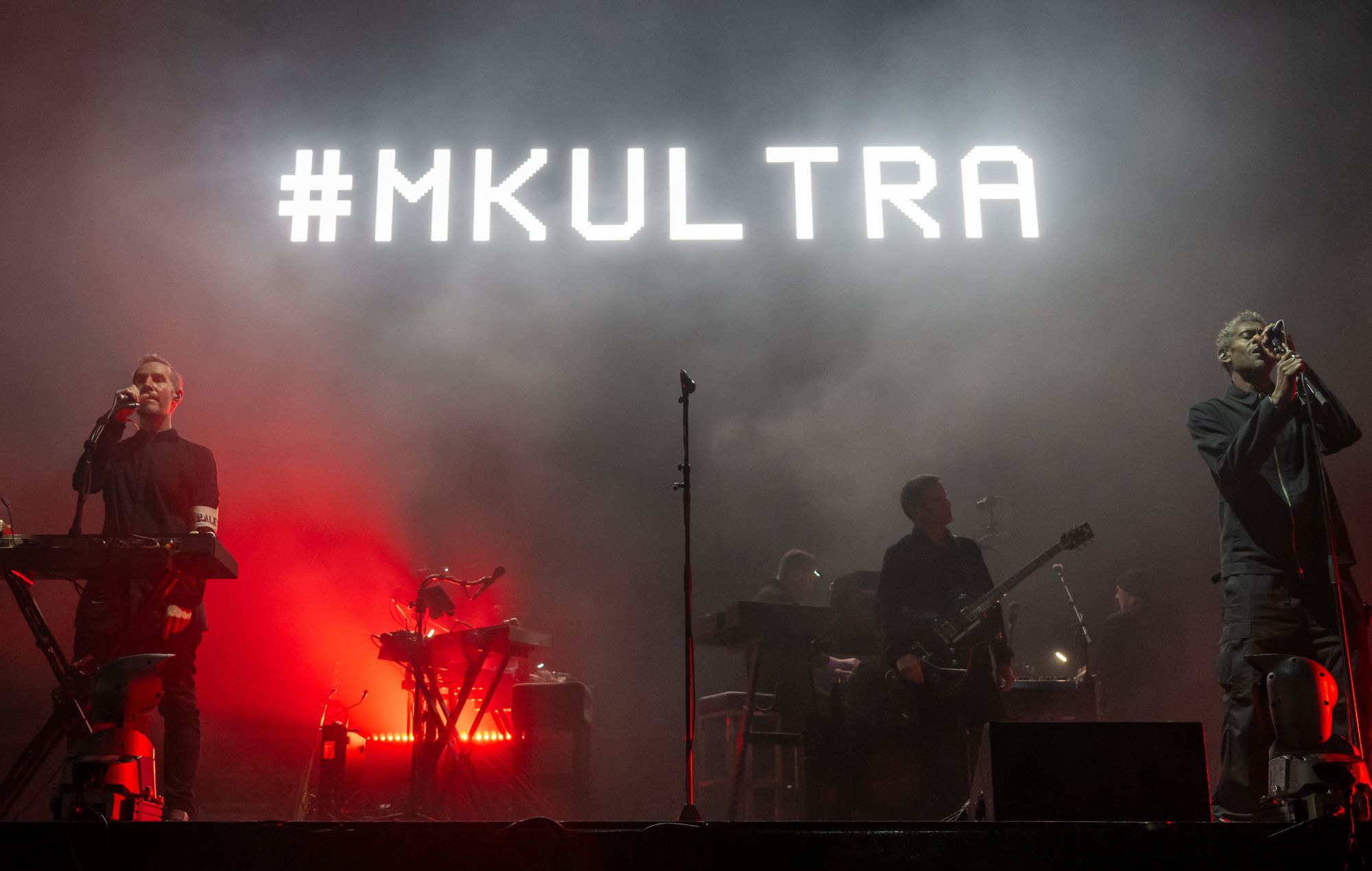Massive Attack have shared a report from their low-carbon shows, with the stop in Bristol becoming their lowest-ever carbon emissions gig.
Their ‘Act 1.5’ show at Clifton Downs in Bristol took place in August last year and was designed as an all-day, “large-scale climate action accelerator event” to celebrate a quarter of a century of climate activism for the band.
It came as the trip-hop group’s first UK performance in five years, and also saw performances from Killer Mike, Lankum, Sam Morton and the Wild Bunch’s DJ Milo. Through various efforts and incentives, The show was designed to be the lowest-carbon concert of its kind, and the band hoped it would provide a model for the rest of the music industry to adopt going forward.
Over 32,000 went to the one-day festival, and efforts included 100 per cent plant-based catering, entirely battery powered, five times more show trains one hour after the national network had closed, and numerous electric shuttle buses to get fans home.
Now, scientists from the Tyndall Centre for Climate Change Research have shared the statistics from the event and reported unprecedented greenhouse gas emissions reductions.
In the figures, it is shown that the Bristol show saw a 98 per cent decrease in emissions from power, an 89 per cent decline in emissions from food and catering and a 70 per cent drop in emissions from equipment haulage.

Emissions from artist travel dropped by 73 per cent, and efforts were also made by the audience – with emissions from audience travel declining by 32 per cent.
It is worth noting that Massive Attack do not use “offset” as part of their emissions strategy. This means that the Sessile Oak and English Oak trees planted in North Somerset as part of the rail incentive scheme for this event are not featured in the report.
The findings shared that while artists are capable of making simple changes to drastically reduce carbon emissions at their live shows, it is necessary for concert-goers to get involved in the efforts if definitive long-term progress is to be made. In the figures, it is shown that five per cent of the audience who chose to fly to the gig were responsible for 64 per cent of the GHG emissions coming from the audience travel.
As highlighted in the study, it seems that more people are flying and travelling greater distances for live shows “while artists visit fewer locations”.
Speaking about the findings, Massive Attack’s Robert Del Naja (3D) said: “Massive Attack are hugely grateful to both the team and the fans that produced a world-leading event, and to the scientists and analysts who – via the huge progressive leaps made in producing the ACT 1.5 show – identified a serious emerging issue for all live music events in the context of climate emergency.”

He continued: “If fans are encouraged to tour the world to see their favourite artists this sector can simply forget about hitting any emissions reductions targets, let alone Paris 1.5 compatibility. There’s a huge question now for tour planning, but also for media and promoter marketing campaigns high on the glitz of epic summer tours that normalise leisure aviation.”
Professor Carly McLachlan, the Associate Director of Tyndall Centre for Climate Change Research, also shared a statement which read: “This proof-of-concept show could change the landscape for outdoor festivals. It demonstrated that there are real opportunities for promoters, providers, local authorities and central government to create the conditions for the UK to lead the world in super-low carbon events.
“A willingness to do things differently was demonstrated by the audience and crew members alike,” McLachlan added. “The unwavering commitment to sustainability from senior members of the production team, including the artist, was essential for the success of the show and inspiring to see – much can be learnt from this approach well beyond live music.”
You can find the full report on the Bristol show here.

Last December, both Del Naja and long-term collaborator Mark Donne spoke to NME about the changes they hope to see across the music industry in response to the climate crisis, and shed light on why Massive Attack turned down the opportunity to play Coachella 2025.
“We can’t give you details but we’re now talking to promoters about taking everything that made Bristol work and moving it into other cities. Potentially a promoter using exactly the same formula for all the series of shows across open spaces in the city for the whole year,” Del Naja said, reflecting on the success of the Bristol show. “That’s what we want to happen. There’s no point in doing one-off exemplars, we want it to move into these practical areas.”
As for why they turned down the festival, he added: “We said no to Coachella for next year because again, we’ve been there once, and once was enough. It’s in Palm Springs. It’s a golf resort built on a desert, run on a sprinkler system, using public water supplies. Mental. If you want to see something that’s the most ludicrous bit of human behaviour – it’s right there.”










